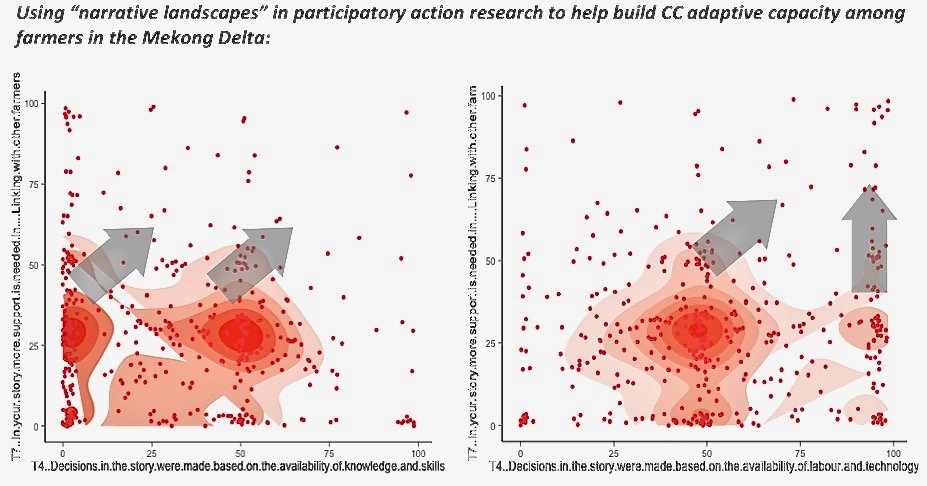SENSEMAKER®
SenseMaker® is a software-based method designed by Cognitive Edge for mass ethnography aimed at uncovering and assessing the undercurrents of system change and impact that are beyond the reach of traditional research methods. It combines the engaging nature of stories with the analytical power of statistics to visualise trends and detect early signals of change. We employ SenseMaker in narrative-driven impact and transition monitoring, and in mixed-methods evaluation using our Participatory Impact assessment and Learning Approach.
Telling stories is the most basic and ancient way in which people understand the world. It’s how we communicate, make decisions, and develop relationships. Stories, therefore, are a rich source of information for research.
SenseMaker is adept at gathering large volumes of quantified stories, often numbering in the thousands, prompted by open-ended questions around a particular topic. A carefully constructed ‘self signification’ framework, comprising a standardized set tools (called dyads, triads and stones), enables the storytellers to add quantified data to their stories, offering insights into their experiences and perceptions of past and future change, and their motivations for engaging with related policies and interventions.
The SenseMaker software automatically aggregates the self-significations and visualises the data patterns, enabling statistical correlation and trend analysis with limited effort and capacity. With sustained use over time, it generates 'narrative landscapes' (or probability density maps) revealing complex change patterns. These make it possible to proactively influence the dynamics through target interventions or policy responses.
SenseMaker in PIALA-based evaluation
In PIALA-based evaluations, SenseMaker aids to investigate the undercurrents of system change and impact. Combined with other methods such as Participatory Statistics and Outcome Harvesting, it helps assess the emergence of causal pathways to impact while navigating the unpredictability of change in complex environments. Employing the same framework and tools across different stakeholder groups (such as beneficiaries and decision-makers) and engaging them in Participatory Sensemaking discussions fosters empowering opportunities for action research and learning.
The method is particularly useful to:
1. Produce real-time evidence of early system change signals (e.g. changing attitudes and relationships) in complex organisational change and development processes.
2. Obtain unbiased evidence of the less tangible triggers of change that is difficult to obtain through other methods and prioritises the voice of the storyteller.
3. Generate powerful visual and narrative material particularly useful for Participatory Sensemaking and Action Research.









